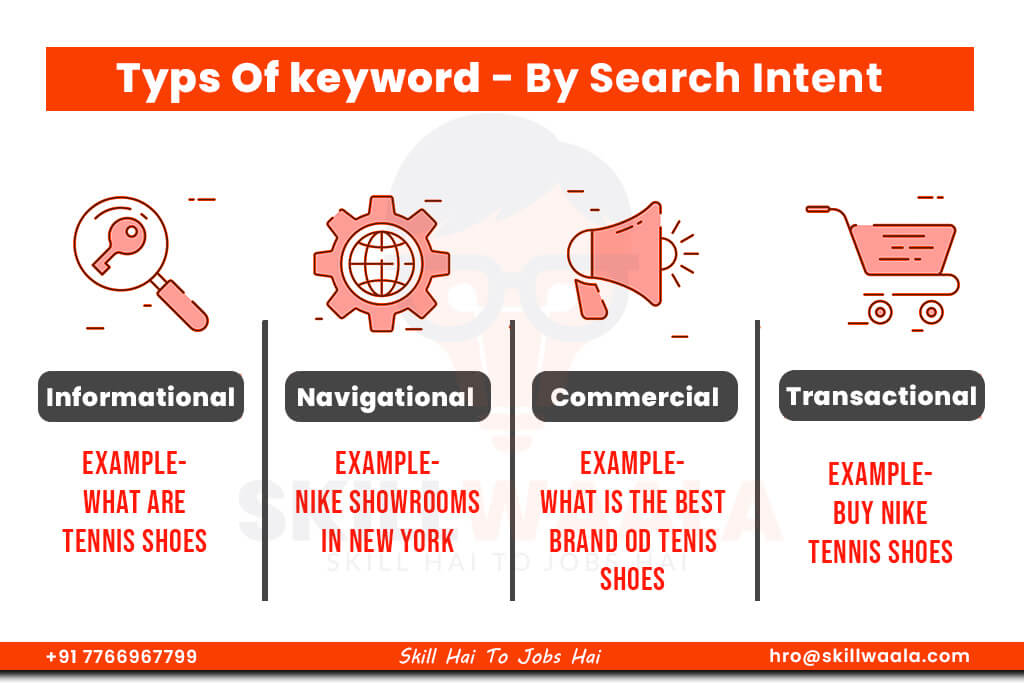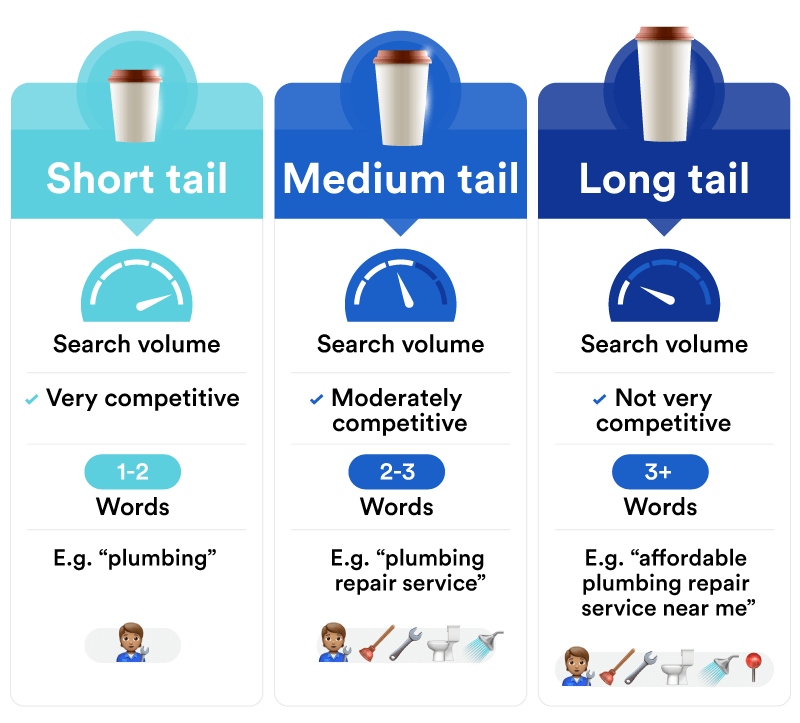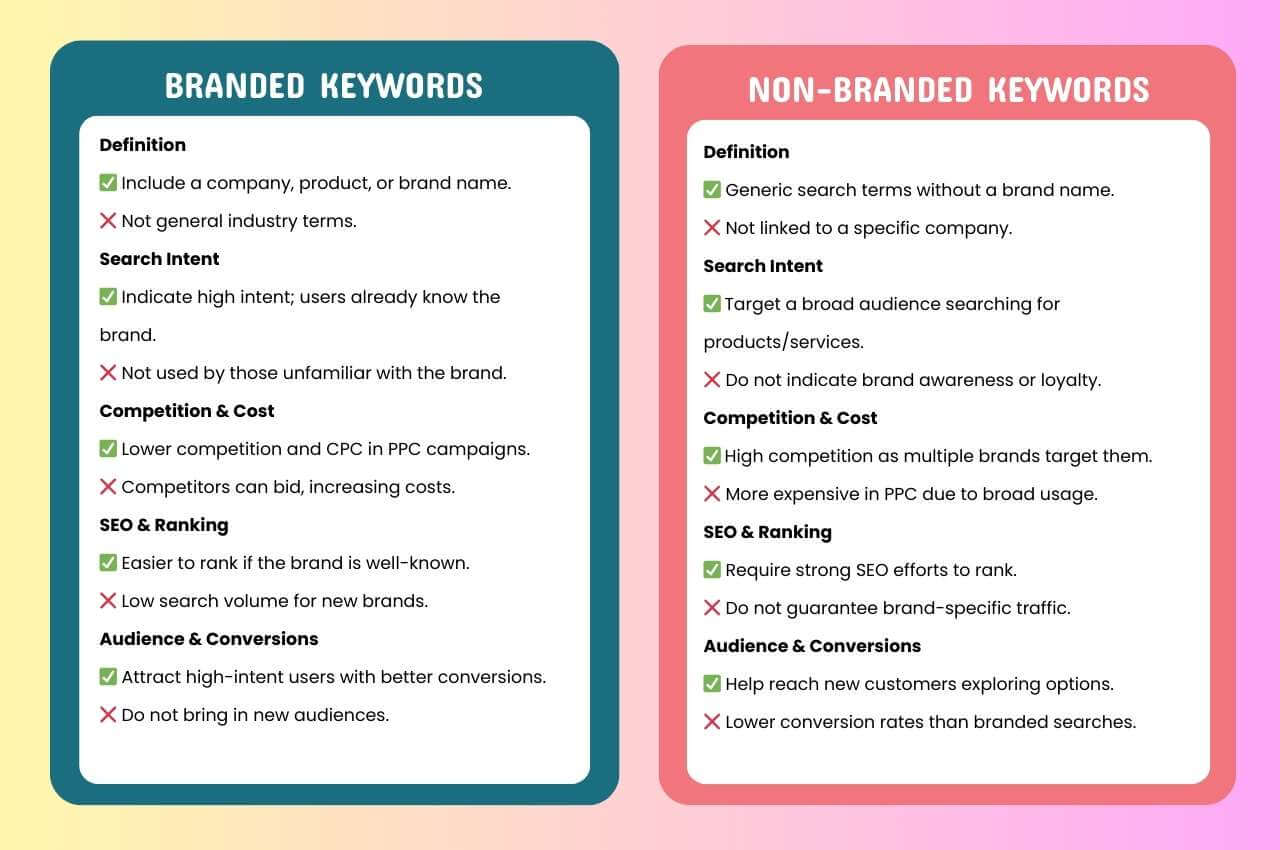Keyword research is the main thing of any successful online strategy. It is the process of finding what people are searching for on Google, so you can optimize your content to match their needs. Whether you are running a blog, an e-commerce site, or a local business, with the right set of keywords you can get noticed by the right audience.
In this blog, we will understand what keyword research is and how to do it. We will also explore the different types of keywords needed to boost website traffic and rankings. Let’s dive in!
What is Keyword Research?
Keyword research is an SEO (Search Engine Optimization) strategy where we look for what people are searching for on Google or other search engines. The main goal is to find the keywords (what people are typing to search for anything) so we can optimize our website and make content accordingly.
If you want more traffic on your website or blog, you need to understand how and what people are searching for. This process is called keyword research. Let’s take some examples:
Example 1: Local Business (Tea Shop)
Let’s say you have a tea shop, and you want more people to find your shop on Google.
If you create a website with just the keyword “Best Tea,” your page might never rank because it’s too generic (which means there will be thousands of pages). But if you use keywords like “Best Tea in Delhi” or “Masala Tea near me,” people who are searching for tea in your area will find your website.
You need to look at how people are searching:
- “Best Tea in Mumbai” (if you are in Mumbai)
- “Kadak Tea near me” (if you are selling kadak tea)
- “Kulhad Tea price in Delhi” (your shop will appear in the user search list if you have listed its price)
The keyword with more searches will be valuable to you.
Example 2: Keyword Research for Blogging (Blog Writing)
Let’s say you want to write a blog about fitness, and you plan to write about “Weight Loss Tips.” If you just use “Weight Loss” as a keyword, competition will be very high. So, you need to find long-tail keywords like:
- “How to lose weight in 7 days”
- “Best diet for weight loss in India”
- “Home workout for weight loss”
Why: These keywords have less competition as they are getting into more detail like a home workout in weight loss and not only weight loss so there is a higher chance of ranking.
Example 3: E-commerce Website (Online Shopping)
Let’s imagine you are running an e-commerce website that sells shoes. If you target just the keyword “Shoes,” it will be difficult to rank because it’s too big (not in size but in intent), which means the competition is high. So, you need to find specific, buyer-intent keywords that people are actively searching for.
- “Best running shoes for men under 2000”
- “Casual sneakers for office wear”
- “White sneakers for women online India
Why: These are long-tail keywords (more specific to detail), so competition is lower.
They are buyer-intent keywords which means people searching for these are more likely to make a purchase. It also helps Google to understand your website topic and whether you have that user intent which improves your site’s ranking.
Read Previous Blog Here: What is SEO? How Does It Work? Crawling, Indexing, and Ranking
Different Types of Keywords
The types of keywords are classified based on user search internet, length, and business goals. Let’s explore them.
Based on Search Intent

It means why the user is searching. Are they looking for information, or making mind to buy a product, or looking for a specific brand?
1. Informational Keywords (Knowledge-based Keywords)
When users are looking for information without any intention of buying a product or service. Examples:
- “What is digital marketing?”
- “Weight loss tips at home”
- “Best exercises for abs”
Real-life Example:
Let’s say a gym trainer is creating a website. He should write blogs on informational keywords like “How to lose belly fat fast” to attract people who might see him as an expert.
2. Navigational Keywords (Brand or Website-related Keywords)
When users are looking for a specific brand or website then those keywords are known as brand or website-related keywords.
Examples:
- “Nike official website”
- “Amazon customer support”
- “Ahrefs blog SEO”
Real-life Example:
If someone wants to buy Nike shoes then they will search for “Nike official store” or “Nike sports shoes Amazon.” If you run a Nike website, you need to ensure these keywords are present on your site so people can easily find you.
3. Transactional Keywords (Buying Intent Keywords)
When users are searching with the intention of buying a product or service.
Examples:
- “Buy iPhone 15 online”
- “Best laptop under 50,000”
- “Order pizza online near me”
Real-life Example:
If you run an e-commerce store that sells headphones then you need to target transactional keywords like “Best budget headphones under 2000” which will help your content reach the users who are ready to purchase.
4. Commercial Investigation Keywords (Comparison or Review-based Keywords)
When users are comparing or reviewing products or services to make the best decision.
Examples:
- “iPhone 15 vs Samsung S23 comparison”
- “Best SEO tool: Ahrefs vs SEMrush”
- “Netflix vs Amazon Prime: Which is better?”
Real-life Example:
If you are a tech blogger, you could write articles targeting keywords like “Best budget gaming laptops 2024” or “MacBook vs Windows for video editing” to attract users who want to see reviews and comparisons.
Based on Length (Short, Medium, and Long-tail Keywords)

1. Short-Tail Keywords (Broad Search Queries, High Competition)
These keywords include only 1 or 2 words that are broad and highly competitive.
Examples:
- “Shoes”
- “SEO”
- “Digital marketing”
Real-life Example:
If you run a shoe brand and want to rank for “shoes,” it’s going to be tough because big companies already rank for this keyword and several sites will come up in your search results.
2. Medium-Tail Keywords (Moderate Competition, More Specific)
These are 2-3 word keywords that are more specific with moderate competition.
Examples:
- “Running shoes for men”
- “SEO strategies 2024”
- “Digital marketing free course“
Real-life Example:
If you run a fitness brand, you can target keywords like “Best running shoes for men in India” to attract more targeted traffic.
3. Long-Tail Keywords (Highly Specific, Low Competition, High Conversion)
These are 4+ word keywords that are highly specific and low-competition.
Examples:
- “Best budget running shoes for men under 3000”
- “Free digital marketing course with certificate in Hindi”
- “How to lose belly fat in 7 days at home”
Real-life Example:
If you are selling an online course, you could target long-tail keywords like “Best SEO course for beginners in 2026,” which have a higher conversion rate because users are highly interested.
Based on Business Goals

1. Branded Keywords
When users search for a specific brand by name.
Examples:
- “Nike running shoes”
- “Apple iPhone 15 price”
- “Zomato food delivery”
Real-life Example:
If you run a startup and want people to find your brand, you need to optimize for branded keywords like “Best deals on XYZ Store.”
2. Non-Branded Keywords
When users search for generic products or services without a specific brand in mind.
Examples:
- “Best running shoes for gym”
- “Affordable smartphones under 20k”
- “SEO tips for small businesses”
Real-life Example:
If you are launching a new shoe brand then focus on non-branded keywords like “Best budget running shoes” because people don’t know your brand yet.
Also Read: The Ultimate Beginner’s Guide to WordPress
How to Research Keywords Using Google Trends
Google Trends is an easy-to-use tool that helps you search the popularity of keywords. Let’s explain in simple steps how you can use this tool for researching keywords:
Step 1: Access Google Trends
First, go to trends.google.com site. Here you will see a clean, simple interface where you can start your search right away.
Step 2: Enter a Keyword or Topic
Type the keyword or topic you want to research in the search bar on the screen. For example, if you want to search for running shoes then type “running shoes”. Press Enter.
Step 3: Choose Your Time Frame
Google Trends will show you data based on the default time range (usually for 12 months). You can adjust this by selecting a specific time frame from options like “Past 7 days,” “Past 30 days,” or “All time,” It all depends on your needs.
Step 4: Analyze Interest Over Time
Now a graph is shown to you which shows how interest in your keyword has changed over time. Look for trends like spikes (ups) or drops (downs), and see if the keyword is growing or losing interest. This can help you understand the best time to target that keyword.
Step 5: Explore Related Queries
When you scroll down, you will see the “Related Queries” section. Here, you will find other popular keywords that people are searching for related to your topic. This is a great way to discover additional keywords or long-tail keywords that did not come to your mind.
Step 6: Compare Keywords
If you want to see how different keywords perform, click “+ Compare” next to the search bar. Add another keyword, for example, “sports shoes” and Google Trends will show you a side-by-side comparison of both keywords, so you can see which one has higher search interest.
Step 7: Filter by Location and Categories
You can further refine your results by location (country or region) and category (such as “Sports & Fitness”). This filter is helpful if you want to target a specific audience.
Step 8: Identify Seasonal Trends
Use Google Trends to check seasonal trends. For example, there are certain keywords that only are popular during specific seasons like “Christmas gifts” or “summer travel”. Recognizing these patterns helps you plan your content accordingly.
Step 9: Leverage Trending Keywords
Check out the “Trending Searches” section for the most recently popular keywords. This section shows what is currently searched the most. This could give you ideas for timely blog posts or content.
Step 10: Use the Data to Refine Your Strategy
Now you have the required data which you can use to refine your keyword strategy. Choose those keywords that show growing interest, have low competition, and perfectly match your content goals.
By following these simple steps, Google Trends can provide valuable information for keywords’ popularity and trends so you can make informed decisions for your SEO or content.
Also Read: Ultimate Guide to Domain, Hosting, and CMS for Beginners
Conclusion
We hope you have understood what keyword research is and how you can do it with useful tools like Google Trends. If you have any doubts you can drop a query on our WhatsApp channel, our expert tutor will get in touch with you within a few minutes or can schedule an online meeting to clear your doubts.
Quiz Questions From Video
Ans. For better ranking and traffic.
Ans. Long-tail keywords have low competition.
Ans. Buying intent.
Ans. “Nike official website”
Ans. “Best running shoes under 2000”.
Ans. The user’s purpose is why and what he/she is searching for.
Ans. False.
Ans. Long-tail.
Ans. “iPhone 15 vs Samsung S23”. It is a commercial investigation keyword.
Ans. For brand awareness and trust.


